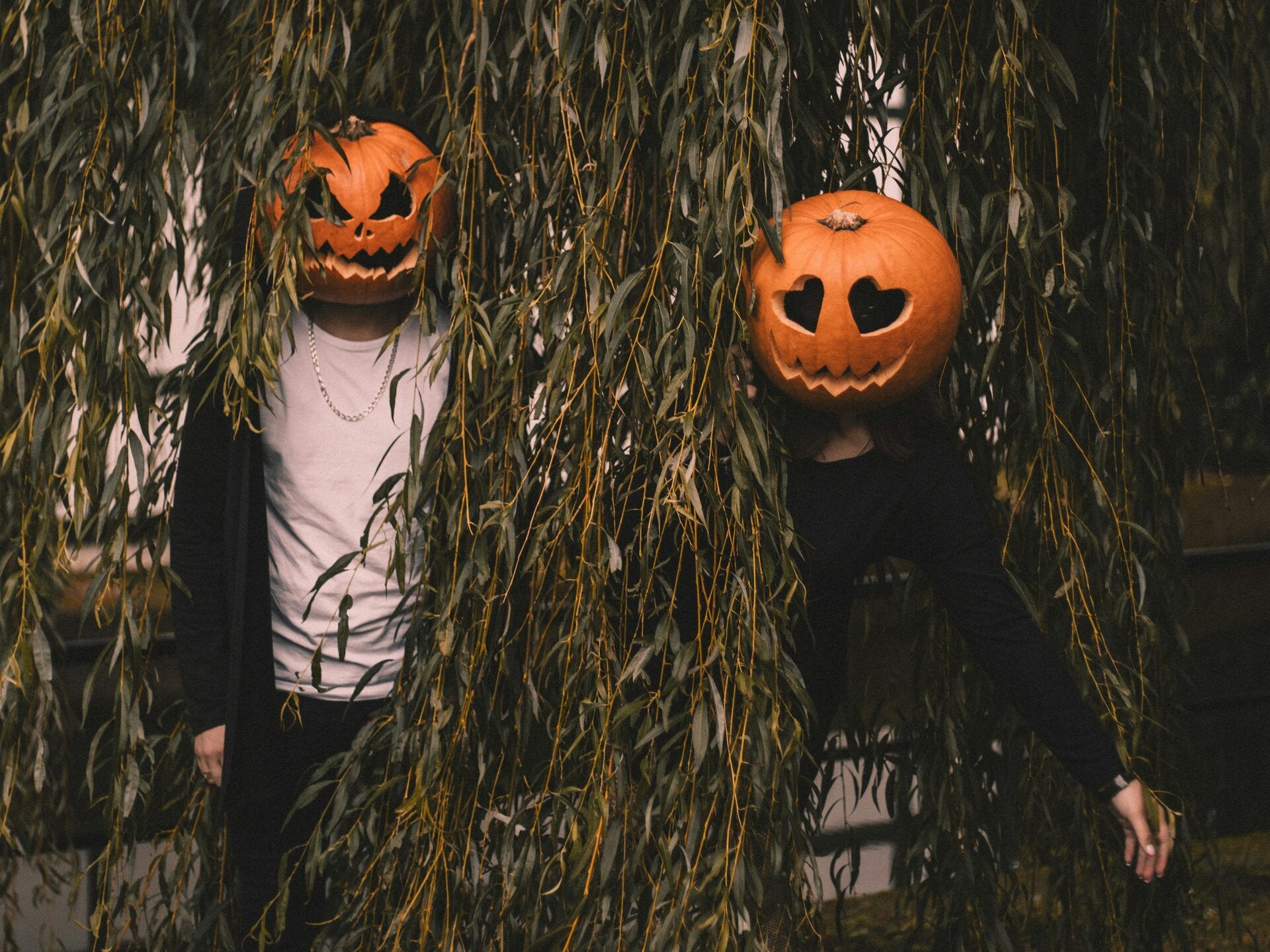Researched and Written by Katy Wicks - Happy Citta Founder

October is the month of masks. The ones we see are playful with plastic fangs, painted skulls or more elaborate disguises that let us slip into another world for a night. But long before Halloween, many of us were experts at the quiet art of masking. We’ve worn them in classrooms, at family tables, in offices, and even in our closest friendships. Invisible masks, but heavy ones.
The Many Faces of a Younger Me
When I look back at my younger self, I remember being very aware that I carried different versions of me into different rooms. There was my “school” personality, my “friends outside” personality, my “family in my home” personality, and even another one reserved for “extended family.” By the time I reached working age, I’d added more: “office-Katy” was different to “pub-job-Katy,” and the latter shaped how I behaved as “social-Katy.”
At the time, I thought this was just how life worked. You presented the “right” version of yourself to match the setting. But even then, I was conscious of the performance. I knew the lines, I knew the roles, and I knew when one version of me was more acceptable than another in a different setting. Swearing back at rude customers from behind the bar would not have gone down so well in my youth work role.
Now, approaching 40 (almost, not quite! I hear life really kicks off then though?), I find myself believing that I’m far more consistent across settings. What you see is largely what you get. Yet even now I notice moments of split.
Around my mother, I can regress into a teenage version of myself, quicker to anger, sharper at the edges, almost intentionally cold. And I now see the contrast between “holiday-Katy” and “work-Katy”. These feel less about other people’s expectations and more about what emerges from within me depending on the environment, my mood or what I'm trying to achieve in that moment.
The Psychology of the Mask
Psychology has long explored this territory. Carl Jung wrote of the persona—the social face we show to the world. Erving Goffman later spoke of life as theatre, with each of us playing roles on the “front stage” of public life while reserving our private selves for the “backstage.”
Neither view condemns the mask. In many ways, it’s a practical necessity. We adjust our language in the office. We soften our tone with children. We withhold sharp truths at the dinner table (depending on your family dynamic, of course). These shifts can be respectful, protective, or simply professional.
But the question comes when we forget where the mask ends and the face begins. When the performance consumes the actor. When a role drains us instead of serving us.
When Masks Protect and When They Don't
Masks aren’t inherently bad. Sometimes they give us courage, like the child who dares more in costume than in ordinary clothes. Sometimes they give us protection, like the professional front that shields us when we’d rather not share our private struggles.
But they can also become heavy. If every day feels like an act, we risk losing sight of who we are underneath. The effort of constant performance can leave us weary, even disconnected from the truer self waiting patiently backstage. If you can't enjoy time with your partner or family in the evening, because you've been 'wearing your smile all day', then something is unbalanced.
The actor Jim Carrey once reflected in an interview that every version of him was, in some way, a role he played, including the act of being “Jim Carrey.” What many of us assumed to be his authentic personality, he framed as another mask, "another performance in the grand play of life". His words are unsettling, but they also highlight the paradox - sometimes even the self we believe is “real” is still a construction.
This makes it harder to separate mask from face, but perhaps that’s the point. If we understand that we contain multitudes, and that some roles are simply lighter to carry than others, then we can choose with more awareness.
Which versions of ourselves feel freeing, and which ones feel like costumes we’re tired of holding up?
Gentle Prompts for Reflection
Perhaps the point isn’t to banish masks entirely, but to notice them. To become curious about which serve us, and which exhaust us. As you read this, you might ask yourself:
-
When do I feel most like I’m wearing a mask?
-
Which parts of me stay the same, no matter where I am?
-
Do the roles I play leave me energised, or drained?
-
Is there a place in my life where I long to be more “mask-free”?
Closing the Curtain
Halloween masks are fun precisely because we know they’re temporary. We try them on for an evening, laugh at ourselves in the mirror, and then peel them away.
Perhaps the freedom we’re looking for in life isn’t to live mask-free altogether, but to remember that beneath the roles, beneath the costumes, there’s a face worth showing. A face that doesn’t need constant disguise to be accepted.
If you've struggled with any of the themes in this blog, you can reach out to Happy Citta for support below:
If you'd like to receive Happy Citta weekly blog posts along with the rest of the weekly subscriber newsletter, you can sign up here:


Add comment
Comments